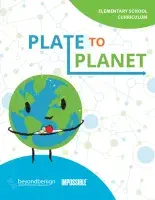The resources listed below are a great collection of experiments and activities that can be used for outreach at public events, in classrooms, or for general demonstrations. You can also search for other resources tagged with the "outreach" keyword through the GCTLC's resource library.
Outreach Activities and Demonstrations
Primary tabs
Biomimicry Matching Game
Biomimicry is the science and art of emulating nature’s best biological ideas to solve human problems. The natural world is made up of very good green chemists. Consider animals and how they make their own shelter and get all the food they need from other things in nature. This is all done without having to use any gas or electricity or taking more than they need, and they produce little waste or ...
Dye-Sensitized Solar Cell
There is a growing need to investigate alternative energy resources due to the depletion of petroleum, a widely used energy source. Solar energy, or energy from the sun, is a free, readily available, plentiful resource that can be collected by solar cells to generate electricity.
Although solar cells have been around for a long time, their use for energy generation is not widespread. This is ...
Greening the Blue Bottle
The Blue Bottle demonstration, involving the colorful redox cycling of methylene blue, is often used to introduce and illustrate the scientific method to younger science students and to study reaction rates and mechanisms with advanced high school and university students. This paper describes a greener blue bottle demonstration that reduces the total amount of material used in the demonstration ...
Investigate the Kinetics of the Color Changing Iodine Clock Reaction
The iodine clock reaction is a favorite demonstration reaction in chemistry classes that usually requires toxic or hazardous chemicals. During the reaction, two clear liquids are mixed, resulting in another clear liquid. After some time, the solution suddenly turns dark blue. The reaction is called a clock reaction because the amount of time that elapses before the solution turns blue depends on ...
Plate to Planet Extension - Elephant Toothpaste
* This is an extension activity to the Plate to Planet Unit. This is an experiment/demonstration that is great for teaching about catalysts. The demonstration will show a chemical reaction in which a catalyst (yeast) is added to hydrogen peroxide to create a foam that looks like a giant squirt of toothpaste that could be used on an elephant!
Plate to Planet Extension - Strawberry DNA Extraction
*This is an extension activity to the Plate to Planet Unit. In this activity, the children will be extracting Deoxyribonucleic Acid, DNA, from strawberries. Cells are the basic unit of life and make up all living things. DNA is the molecule that controls everything in the cell. DNA contains the instructions that direct all the cell’s activities. This lesson will show how DNA can be isolated from ...




